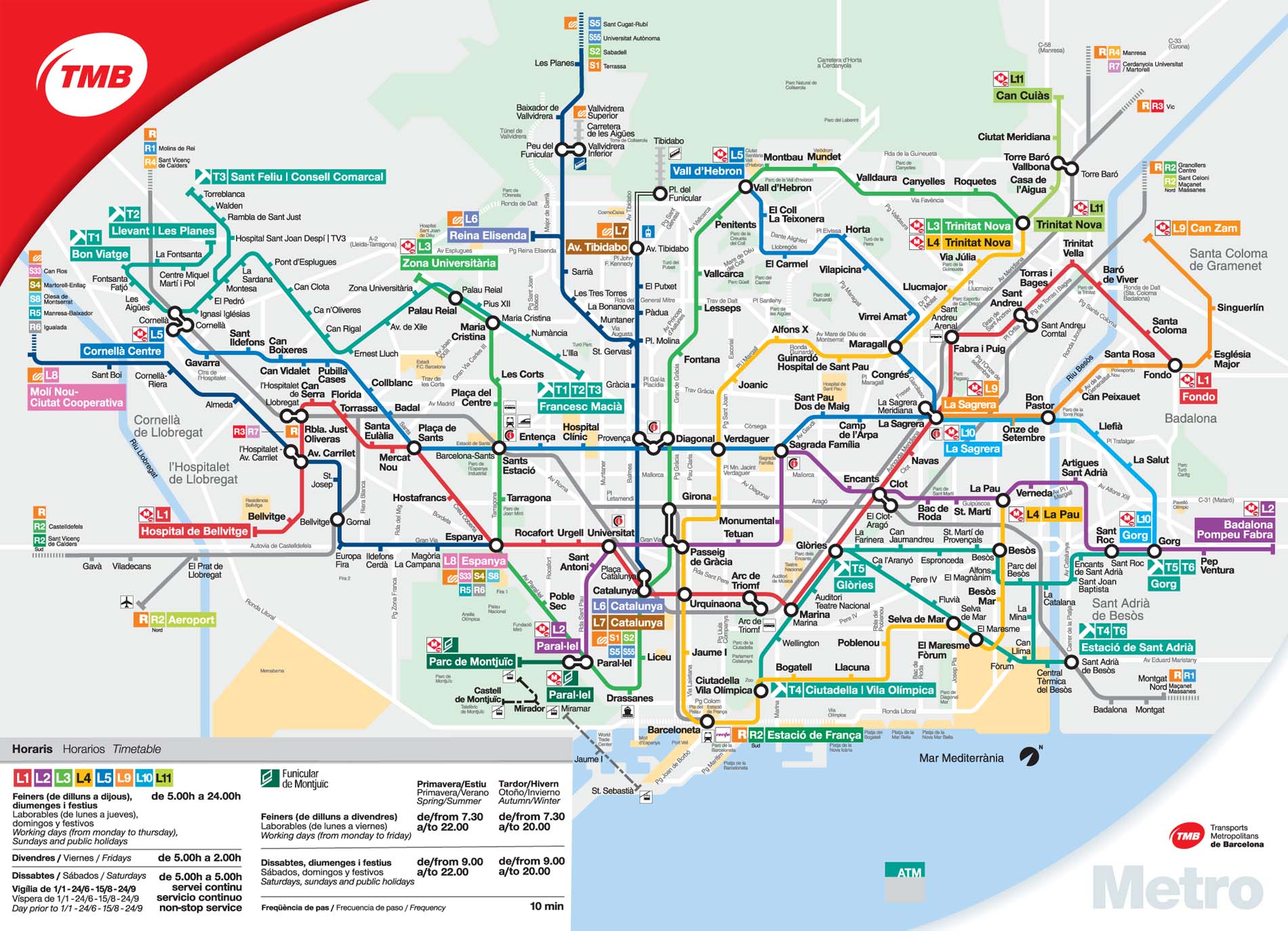

Did you just land in Barcelona? Or are you planning to come to Barcelona soon? Here you can find some tips and pieces of advice that may help you.
Table of Contents
I’m sure you’re aware by now that in Catalonia there are two official languages that coexist: Spanish and Catalan. You’ll see all signs in the two languages, and in Barcelona in many places English or French is also included. Don’t panic, Catalan is also a romance language and it’s close to Spanish and French. Here are some key everyday words and phrases in the two languages:
Hello – Hola – Hola
Bye – Adiós – Adéu
Thanks – Gracias – Gràcies (in Barcelona you’ll also hear locals say Merci, but it’s not Catalan)
Good morning – Buenos días – Bon dia
Good afternoon – Buenas tardes – bona tarda
The bill, please – La cuenta, por favor – El compte, si us plau
Sorry – Perdón – Perdó
Barcelona and its surrounding towns have a good network of public transport: metro, train, buses, trams… You can find information in the TMB (Transports Metropolitans of Barcelona) website, where you find all the routes, timetables, combinations… The most used ticket is the T10, that gives you access to 10 trips in all forms of transport within the area (zone 1 is the metropolitan area and includes also some towns on the outskirts). You can change the means of transport using the same trip on the ticket if you do it within 75 minutes. This means you can travel by metro and change to train or bus with the same trip from the ticket if you do it in this time limit. The metro, the most used public transport, runs from 5am to 12 at midnight from Mondays to Thursdays and to 2am on Fridays. On Saturdays it runs all night. Be careful with pickpockets, especially in the centre area and when the metro is crowded! You also have night buses that run from 22:30 until 4:30am every 20 minutes. The FGC trains are also integrated in the network.
You’ll see lots of public bikes around the city and people using them. The Bicing system is getting really
popular, and there are lots of bike lanes, especially in Eixample and the Vila Olimpica area. To be able to use it you need a year pass, that costs less than 50€, with an extra charge to be able to use electric bikes. There’s a 30 minutes time limit to leave your bike at the next station with no charge. You can download
There are lots of banks and ATM all around the city, look for the sign “Cajero automático/Caixer Automàtic”. One of the most popular and common banks is La Caixa (its sign is a star designed by the Catalan artist Miró). Again, to be able to open an account in a Spanish bank you need a NIE number. Banks open from Monday to Friday and only in the morning (they typically close around 2pm) except for Thursdays, when they open also in the afternoon (not during the summer period, though).
Spaniards tend to have lunch and dinner later than other Europeans, especially during the weekends. You won’t have any problems to be served early though, Barcelona is a very touristic city and restaurants and bars are quite flexible, serving food almost all day and usually until midnight. But don’t expect to find locals having dinner at 6!
If you still haven’t found accommodation, remember ShBarcelona offers lots of rentals in different areas of the city!
Barcelona’s Mediterranean climate, with increasingly warmer and longer summers, makes air conditioning an essential feature…
Maybe you're thinking about selling a property or you've just inherited one or more real…
Do you enjoy strolling among trees and plants, away from the hustle and bustle of…
If you are planning to move to Barcelona for a few months or permanently, one…
ShBarcelona establishes itself as the leading agency within the Apialia Eixample Group, reaffirming its position…
Are you going to visit Barcelona this 2025? The vibrant Catalan capital once again becomes…